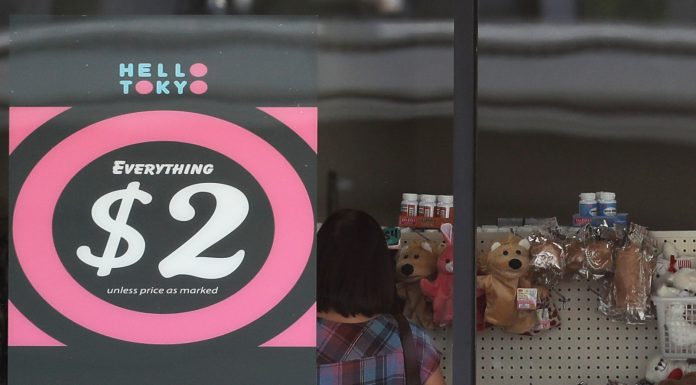(Associated Press) Small businesses can still get help from the government’s coronavirus relief plan after Congress extended the Paycheck Protection Program until Aug. 8.
The program that was set to expire Tuesday still has nearly $132 billion left after giving out more than 4.8 million loans since it began April 3. Loan recipients included companies as varied as restaurants, dental offices, retailers, construction companies and manufacturers that were devastated by the virus and shutdown orders that state and local governments issued in hopes of containing it. Nonprofit organizations were also eligible.
The House gave final approval to the program’s extension last week. President Donald Trump signed it over the weekend.
The PPP is part of a $2 trillion coronavirus aid package passed by Congress in March. On Monday, the Small Business Administration, which oversees the program, disclosed the names of companies that received loans of more than $150,000. They accounted for less than 15% of the loans.
Some questions and answers about the PPP:
WHAT DOES THE PPP AIM TO DO?
The program aims to motivate small businesses to retain their employees or, if they have laid them off, get them back to work. The primary incentive for companies to seek PPP loans is the offer of forgiveness if most of the money — originally 75% but later revised to 60% — is used for payroll. Businesses can borrow up to $10 million based on their payroll costs; the loans carry a 1% interest rate and deferred payments for six months. Owners can also use the money for rent, mortgage interest and insurance. If businesses cut jobs or employees’ pay, they’d have to repay some of the money.
HOW DO COMPANIES GET FORGIVENESS?
Owners must use the loan money within 24 weeks after receiving it; that number was also revised, from an original eight weeks. When the money is spent, businesses can apply for forgiveness by documenting how much of it was used for payroll, rent, mortgage interest, insurance or other expenses.
Many businesses like restaurants and retailers whose revenue either slowed dramatically or stopped altogether are concerned that they’ll end up having to repay part of the money because they’ve had to use some of it to restart their companies.
HAS THE PPP SUCCEED IN SAVING JOBS?
The full answer to that question won’t be known for months, when owners have filed their forgiveness applications that must document how many workers they had on their payroll. Some companies like restaurants and retailers may still not have enough revenue because of social distancing requirements and slower consumer spending, and they may be reluctant to rehire all their staffers.
If the nation’s unemployment rate is an indication, the PPP did indeed save jobs. After soaring to 14.7% in April, it fell to 13.3% in May and 11.1% in June as businesses reopened. However, it’s not known what impact the surge in cases of coronavirus this past month will have on employee hiring and retention.
HAVE COMPANIES BEEN SATISFIED WITH THE PROGRAM?
The reaction has been mixed. Certainly, companies that got loan money were happy to have a cushion but for many, there are still worries about having a debt to pay off.
Businesses that hire independent contractors can’t include what they pay those workers in their calculations, and so the money they borrowed was far less than what they needed. Sole proprietors and new companies have had a hard time applying and getting money.
A series of obstacles marred and slowed the application process. The SBA approved more than 4.8 million loans in less than three months, far more than the 58,000 it approved in 2019. There were computer issues and backlogs at the agency and at banks in the early going. Many banks also enraged owners at the start by rejecting their applications if they didn’t have multiple accounts including existing loans or lines of credit. And some of the biggest banks in the country took a week or more to start accepting applications.
The problems made it more difficult for minority businesses to get loans, according to a report from the Center for Responsible Lending, a research group.
Once they submitted their applications, many owners waited weeks without knowing their status. Some applied at several banks, hoping for better service. Their frustration was likely fed in part by Treasury Secretary Steven Mnuchin’s forecast that they might get loan money the same day they applied.
Some owners were so frustrated by the process or concerned about forgiveness that they gave up and didn’t apply or withdrew their applications.
IS THAT WHY THERE’S MONEY LEFT OVER?
That’s part of it. But the unclaimed amount also includes approximately $30 billion of dollars returned by large companies including high-profile names like the Los Angeles Lakers and restaurant chains Ruth’s Chris Steak House and Shake Shack. Many well-financed companies eventually returned the money amid pressure from the public and the Treasury Department. Senior administration officials who briefed reporters before the data was released said it was expected from the beginning that money would be left over.
IS OTHER GOVERNMENT AID AVAILABLE FOR SMALL BUSINESSES?
The Federal Reserve has created the Main Street Lending Program for small and mid-sized businesses. It offers loans starting at $250,000 with no principal payments for two years. Companies apply for the loans through banks.
The SBA is also making what are called economic injury disaster loans and grants available to businesses. Owners need to apply directly to the SBA through its website, www.sba.gov.
Many state and local governments and community development organizations are also making loans and grants available.



